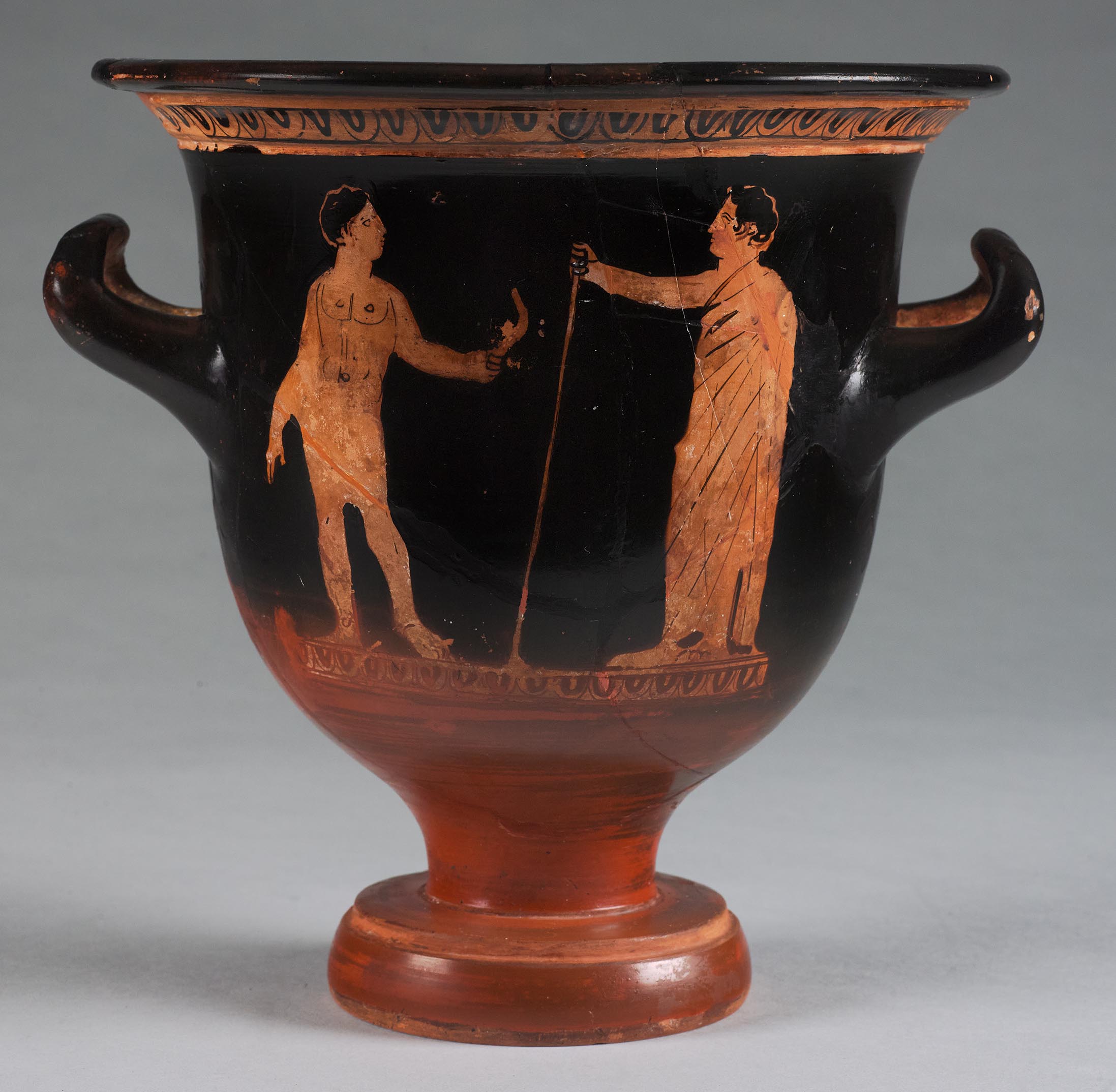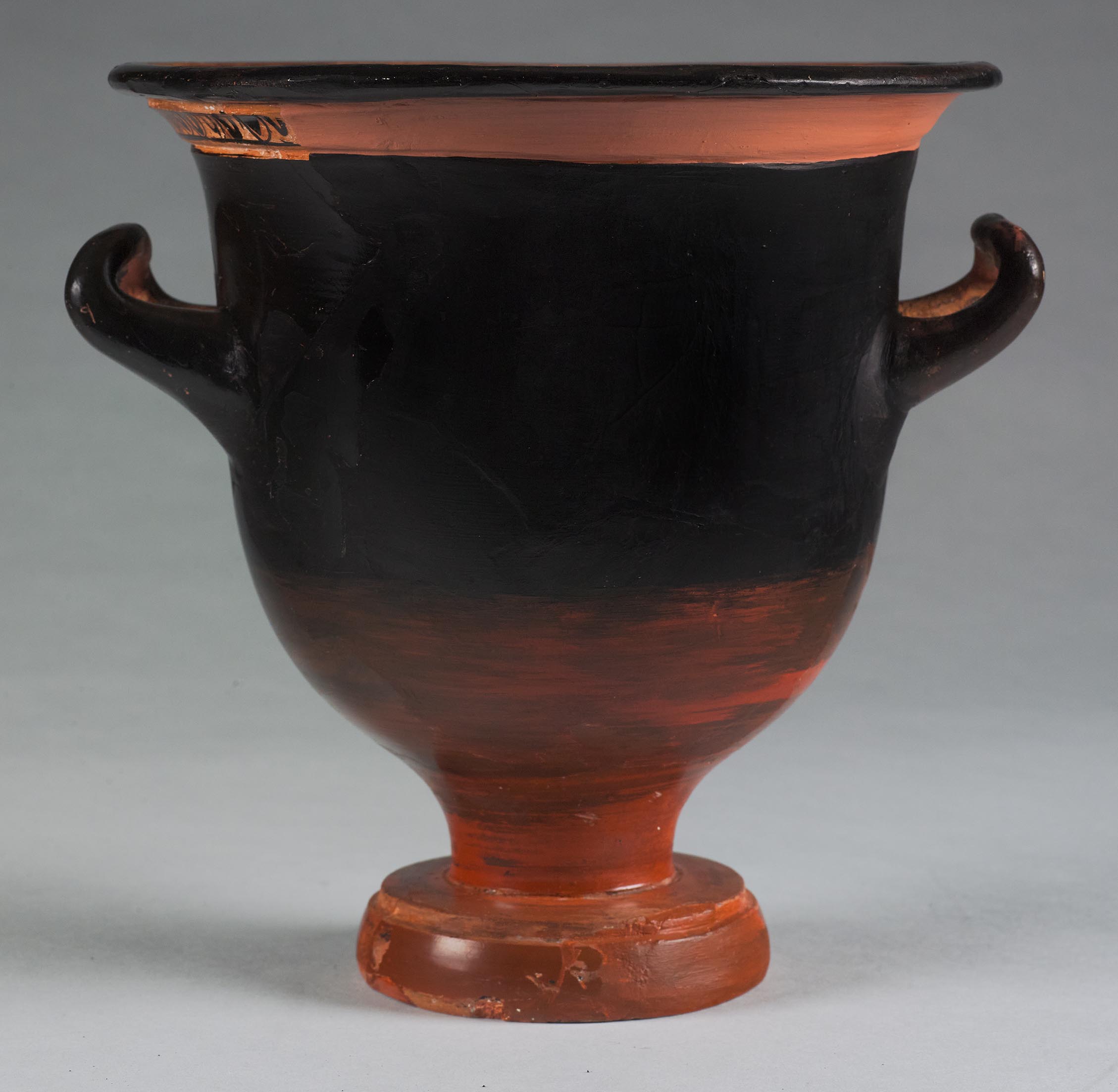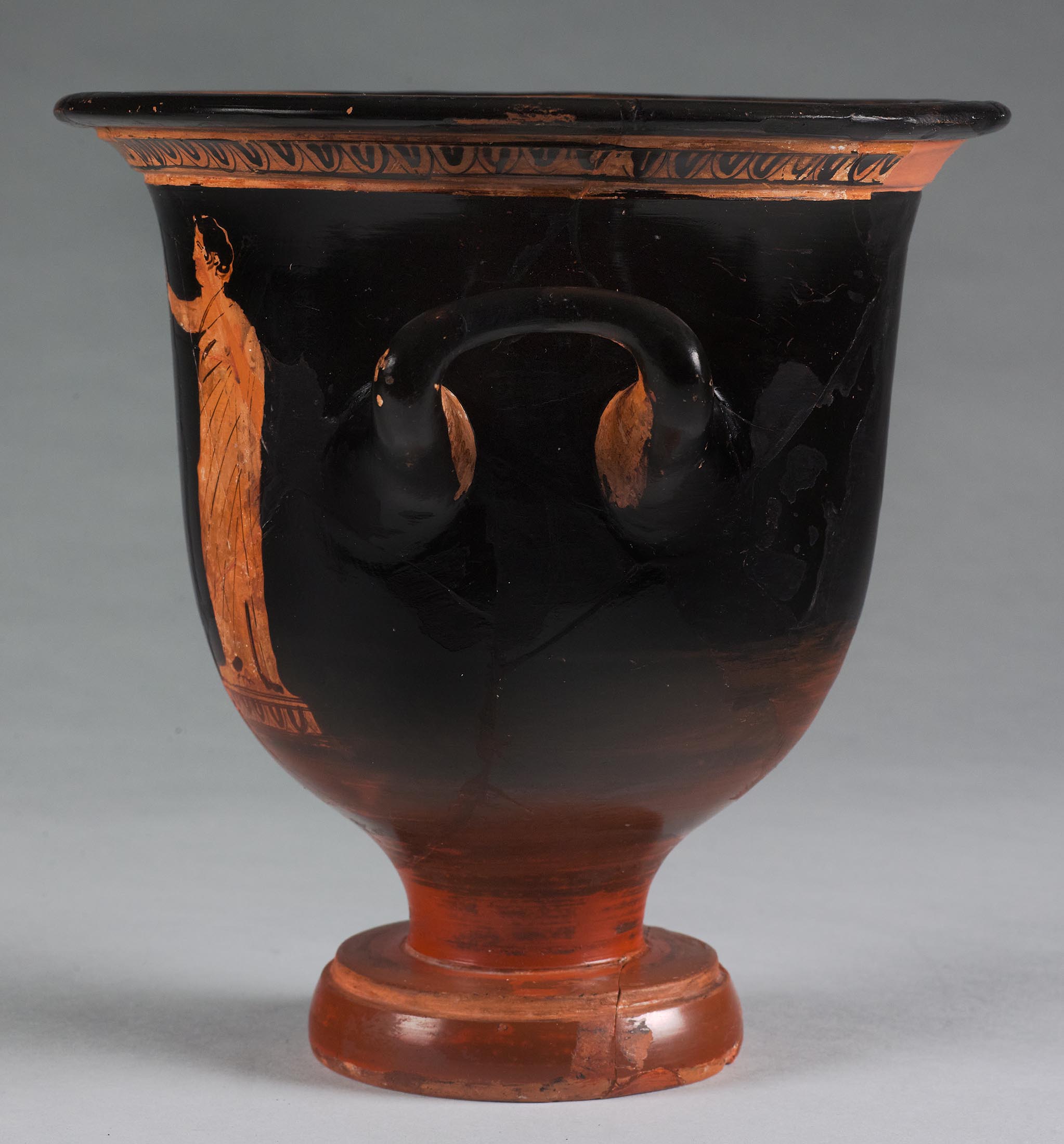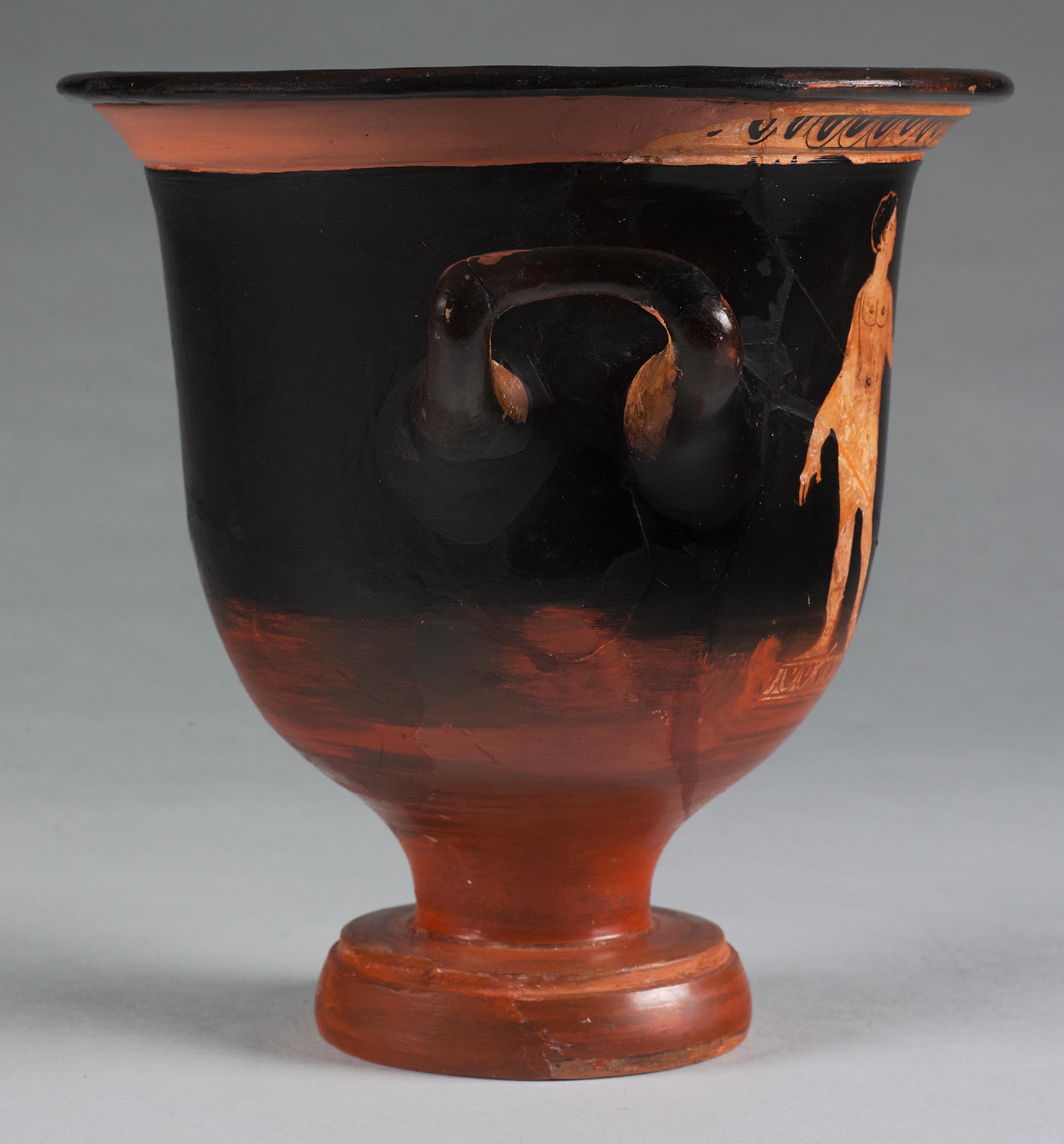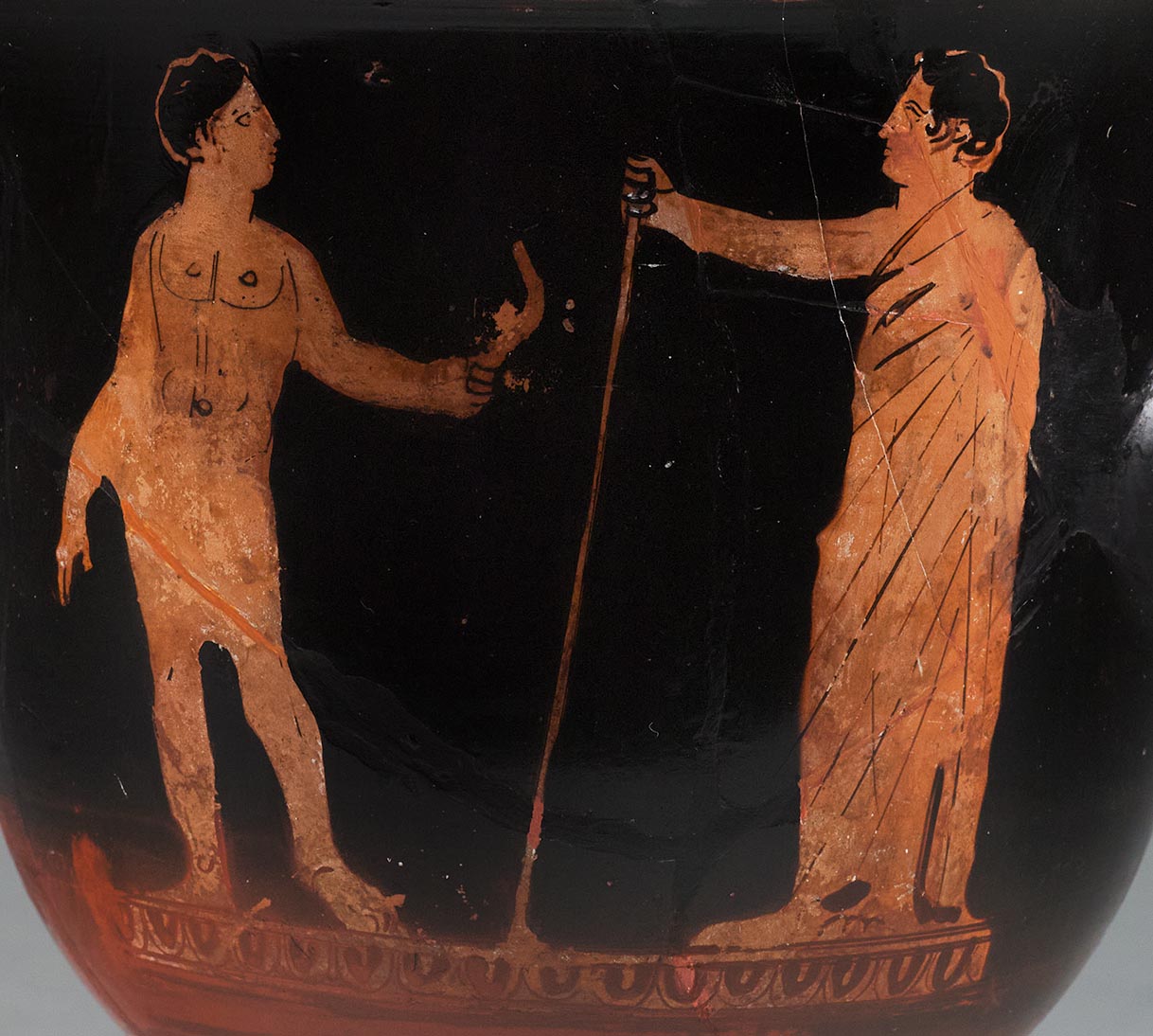Provenance
1949, bequest, Jessie P. Frothingham to Princeton University. Although it is unknown where Frothingham acquired this vase, as a buying agent in Italy for Princeton and other American museums, he acquired other works from Etruscan sites, including Narce, Vulci, and Chiusi. For more on Frothingham, see J. M. Padgett, “The Collections of Ancient Art: The Early Years,” Abbreviation: Princeton RecordRecord of the Princeton University Art Museum. (1942– ). 55 (1996): 107–24.
Shape and Ornament
Flaring rim; black torus lip above a fascia framed by reserved grooves and decorated with ovolo. Round, upturned handles, extending beyond the rim; inner surface of handles reserved. Standard, bell-shaped body, tapering quickly to a narrow stem beneath a groundline of ovolo. Interior black except for two reserved bands, one just below rim and another 3.4 cm below. Black disk foot with reserved riser at the top; underside reserved.
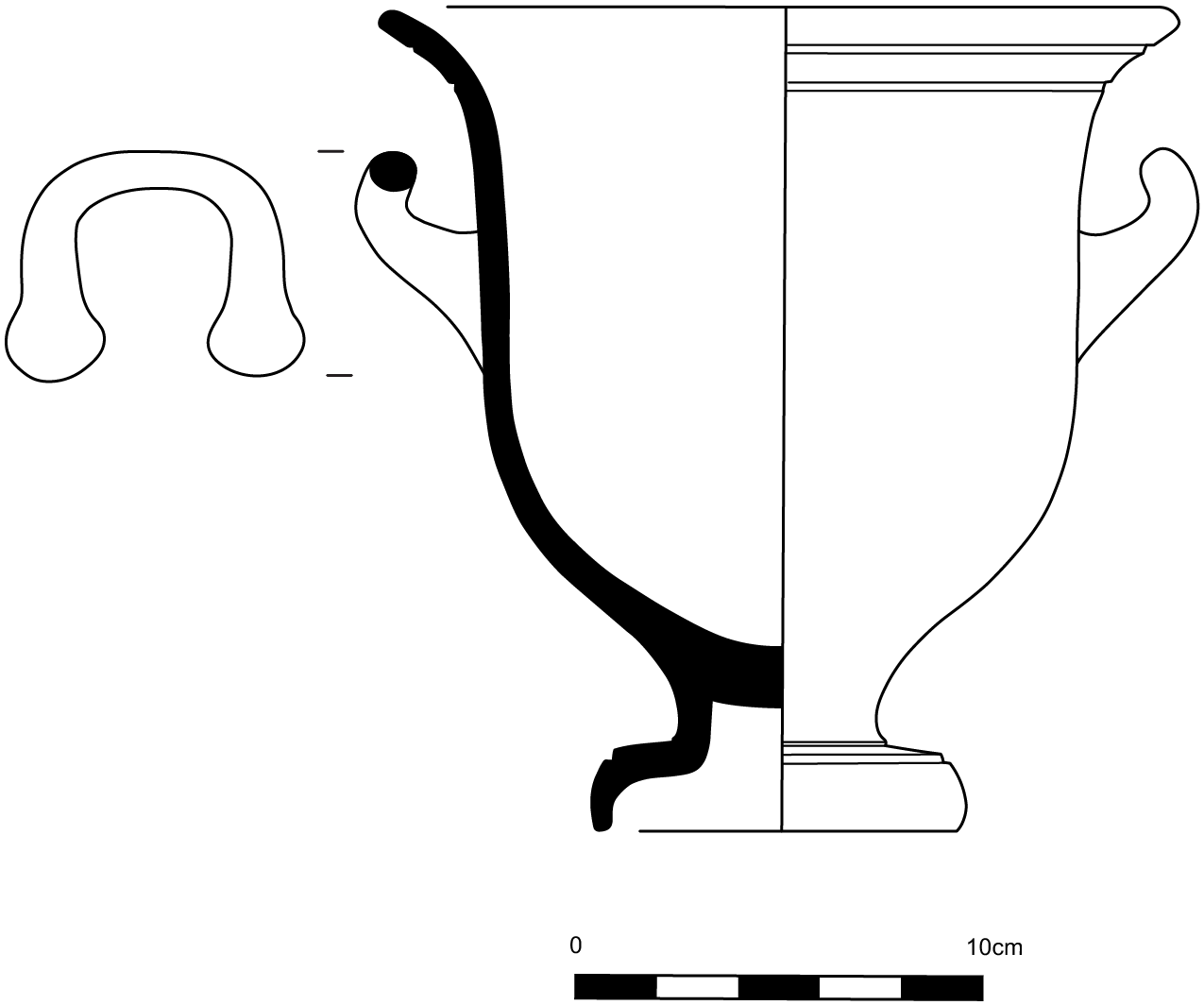
Subject
Two beardless males face one another in the gymnasium. The nude athlete at left stands frontally in a relaxed, contrapposto pose, with his head in profile to the right. His non-weight-bearing left foot is drawn in three-quarter view, as if dragging behind him. He holds a strigil in his raised left hand while his right arm hangs lazily at his side. The youth at right is shown in profile, extending his right arm to grip a staff held upright and resting on the ground. His himation and staff may indicate that he is a trainer.
Attribution and Date
Unattributed. End of the fifth century BCE.
Dimensions and Condition
h. 20.3 cm; w. 20.6 cm; diam. of mouth 19.6 cm; diam. of foot 9.1 cm. Broken and mended. Side B almost entirely lost and restored in plaster, as are other gaps and cracks. Figures worn, especially the hips and thighs of the athlete. Black gloss on the foot and lower body misfired streaky reddish brown, as has the floor of the interior.
Technical Features
Relief contours limited to the face and neck of each figure.
Bibliography
Unpublished.
Comparanda
The figural drawing, in particular the sparing use of relief contours, the straight-lined drapery of the trainer, and the rather large and cursorily drawn anatomical features, such as toes and fingers, all point to a date at the end of the fifth century or possibly moving into the fourth. The anatomy of the nude athlete, with his large circular nipples, navel, and ankle is quite distinctive, but close parallels are wanting. The Academy Painter, the latest painter of the Mannerist Workshop and predominantly a painter of bell-kraters (see Abbreviation: Mannack, Late ManneristsT. Mannack. The Late Mannerists in Athenian Vase-Painting. Oxford, 2001, 43–45), often painted his figures with large circular nipples, navels, knees, and ankles: cf. Athens 12239 (Abbreviation: ARV2J. D. Beazley. Attic Red-Figure Vase-Painters. 2nd ed. Oxford, 1963 1125.17; Abbreviation: BAPDBeazley Archive Pottery Database. http://www.beazley.ox.ac.uk 214878), including the drawing of the curved iliac crest. However, although still highly cursory, the drawing on Princeton’s krater is far more careful than that of the Academy Painter. For the posture of the athlete, with one leg foreshortened and drawn as if dragging behind him, cf. the name-vase of the Painter of Louvre M 85 (Abbreviation: ARV2J. D. Beazley. Attic Red-Figure Vase-Painters. 2nd ed. Oxford, 1963 1342.2; Abbreviation: BAPDBeazley Archive Pottery Database. http://www.beazley.ox.ac.uk 217552); by the Bull Painter, Vienna 864, (Abbreviation: ARV2J. D. Beazley. Attic Red-Figure Vase-Painters. 2nd ed. Oxford, 19631349.8; Abbreviation: BAPDBeazley Archive Pottery Database. http://www.beazley.ox.ac.uk 240016), albeit with a more vigorous scene overall. For the draped trainer, cf., by the Odeon Painter, Urbana-Champaign 70.7.2 (CVA Urbana-Champaign 1 [USA 24], pls. 19.1–2, 20.1–2; Abbreviation: BAPDBeazley Archive Pottery Database. http://www.beazley.ox.ac.uk 18462). For discussions of Greek athletes in the gymnasium, see Abbreviation: Mind and BodyMind and Body: Athletic Contests in Ancient Greece. Edited by O. Tzachou-Alexandri. Exh. cat. National Archaeological Museum, 15 May 1989–15 January 1990. Athens, 1989, 148–84; S. G. Miller, Ancient Greek Athletics (New Haven, CT, 2006), 31–86, 176–95.
Although the handles are sharply upturned, they nonetheless extend beyond the diameter of the rim, suggesting that this vase should be dated in the fifth century: see M. B. Moore, Attic Red-Figured and White-Ground Pottery, Abbreviation: AgoraAthenian Agora (Princeton 1953– ) 30 (Princeton, NJ, 1997), 32–33. The fascia below the rim is standard for bell-kraters of this period, although they are often decorated with floral motifs (e.g., laurel wreaths), combined with groundlines consisting of rectilinear motifs such as meanders and saltire squares. For a comparable hastily drawn ovolo on both the fascia and the groundlines, cf. an unattributed bell-krater, Vienna 3734 (CVA Vienna, Kunsthistorisches Museum 3 [Austria 3], pl. 138.1–2; Abbreviation: BAPDBeazley Archive Pottery Database. http://www.beazley.ox.ac.uk 563). When ovolo are painted on the rim, the groundline is almost invariably a band of ovolo as well.
